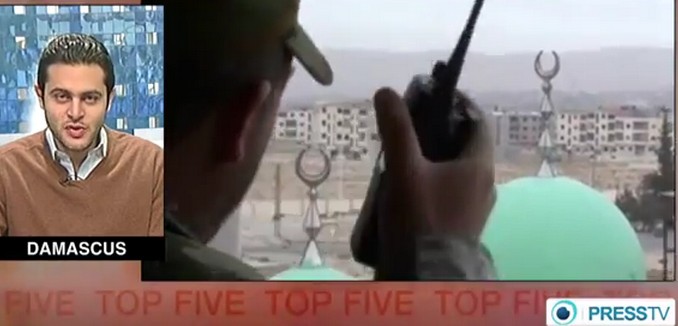Iranian news is boasting that the Syrian army has regained control of the strategic border town of Jarajir near Lebanon. The reports are contested – the Syrian Observatory for Human Rights says the town is still contested – but the Syrian army has been pounding the area, including the town of Yabroud to the south – in a sustained campaign. The attacks are part of a broader “battle of Qalamoun,” a reference to the mountainous region on Syria’s western border. The nearby town of Deir Attiya was captured last November.
An article published late last year by the Institute for the Study of War explained the area’s significance:
Straddling Lebanon’s Beqaa Valley to the west, the Qalamoun area lies on Syria’s strategic central corridor connecting Damascus to Homs. Like al-Qusayr, the towns in the rugged and mountainous terrain of Qalamoun are crucial to both rebel and regime interests. It is of crucial importance to the regime, connecting the capital to Assad’s coastal strongholds in Tartous and Latakia. Qalamoun also provides the rebels with cross-border access to supplies from the rebel-supportive town of Arsal, Lebanon, allows rebels a place of refuge and acts as a launching point from which to attack regime positions on the northern outskirts of Damascus.
Forces loyal to the Bashar al-Assad regime have steadily eroded rebel positions in a months-long sustained counteroffensive. Nonetheless analysts continue to insist – and Foundation for Defense of Democracies (FDD) research fellow Tony Badran was explicit on this claim a few weeks ago on a conference call held by The Israel Project – that the rebels are also retaking territory. The Israeli defense establishment sees a stalemate looming:
The Syrian revolt is now three years old. Despite a rough infancy, it is maturing right before our eyes, with no intention of leaving anytime soon. Israel’s strategic assessment has changed from a “few weeks” to much longer. At this juncture, Israel Defense Forces top brass believe that the struggle in Syria could last as long as a decade. Wording this cautiously, a very high-ranking Israeli defense official told me: “We’re facing a decade of struggle in the Syrian environs.”
So does Director of National Intelligence James Clapper:
Clapper said he expects a “sort of prolonged stalemate” in which Assad’s government does not have the strength to hold onto territory it clears, and the rebels have enough external support to keep fighting. The strength of the Syrian insurgency is now estimated at anywhere from 75,000 fighters to 115,000, organized into more than 1,500 groups of “widely varying political leanings,” Clapper said.
Ongoing Syrian fighting has not just spilled over into – and in some cases, deeply destabilized – Lebanon, Iraq, and even to some extent Jordan. Much of the tension is along confessional lines.
In Lebanon, figures from the anti-Hezbollah March 14th movement long ago blasted Hezbollah for fighting in Syria, predicting that it would “pave the way for Sunni-Shiite strife.” The prediction was, if not outright confirmed, then certainly reinforced last December amid sectarian violence in Tripoli.
In late October, a series of attacks by Al Qaeda-linked terrorists in Iraq prompted Shiites to consider taking up arms independent of Iraqi security to defend themselves.
[Photo: PressTV Videos / YouTube ]




